Since the outbreak of the new coronavirus in 2019, many different mutant variants have been created. Among them, the Omicron variant has been spreading around the world following the Delta variant.
The following is an explanation of the characteristics of the Omicron variant, which has been transmitted in the community in Japan, focusing on its infectivity, symptoms, and severity.
Table of Contents
What is the Omicron variant?
Omicron variant is one type of the new coronavirus variants, which was reported from South Africa on November 26, 2021. Two days later, the World Health Organization (WHO) designated the B.1.1.529 variant as a Variant of Concern (VOC) and named it Omicron in Greek letter order.
VOCs are mutant variants that have been shown to have increased transmissibility, increased virulence, and/or worsened effectiveness of public health response, diagnosis, treatment, and/or vaccines. As of January 2022, there are now five VOCs: Alpha, Beta, Gamma, Delta, and Omicron. (Click here for details)
What is the infectivity (transmissibility) of the Omicron variant?
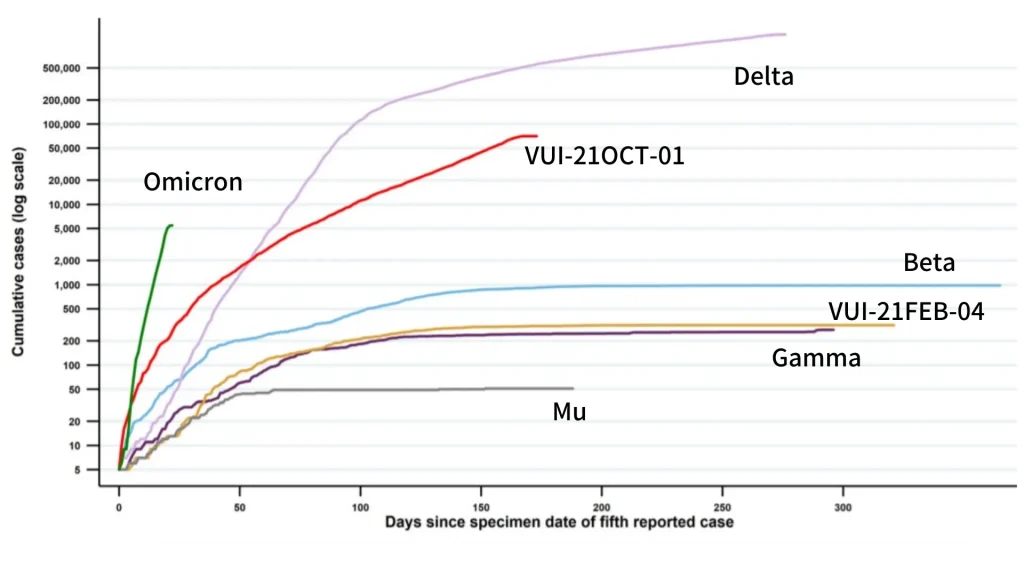
Although, this is not yet clear, the Omicron variant is thought to be more infectious variant than other variants, The infectivity of virus is related to four parameter as follow. (Click here for details)
- Ability of the virus itself to enter cells (infectivity)
- Contagiousness of the infected person
- Susceptibility of the uninfected person
- Environmental stress on the virus (temperature, humidity, ventilation, etc.)
As for the ability of the virus to invade, the spike protein on the surface of the Omicron variant has a high affinity for ACE2 on the cell surface, which is thought to facilitate cell invasion. In fact, the Omicron variant is spreading faster than the Delta variant, and in many countries the Omicron variant dominates among new infections. (Click here for details)
Studies tracking contact transmission suggest that the Omicron variant is more transmissible than Delta. For example, in the UK report that tracked intra-familial transmission, the probability of transmission to a contact was about 10% from a delta-infected patient, compared to 18% from an Omicron-infected patient.
What are the symptom and severity of the Omicron variant?

Symptoms caused by the Omicron variant are very diverse. Some people infected with Omicron have been asymptomatic, while others have developed pneumonia and died. However, the Omicron variant is thought to be more similar to cold symptoms than other strains.
It is not yet clear whether infection with Omicron is more severe than infection with other mutant variants, but some studies suggest that severity of the Omicron variant tends to be milder.
A report from Imperial College London, UK, found that “Omicron-infected patients have a 20-25% lower risk of hospital admission and a 40-45% lower risk of hospitalization for more than one night than Delta-infected patients.”
The University of Edinburgh reported a two-thirds reduction in the risk of hospitalization with the Omicron variant compared to the Delta variant, based on hospitalization data from November 1 to December 19. The Danish report also stated that 0.6% of those infected with Omicron were hospitalized compared to 1.6% of those infected with other mutants.
On these backgrounds, the results of a peer-reviewed University of Hong Kong study suggest that “the Omicron variant grows faster in the bronchial tube than Delta and/or normal variants, in contrast to its relatively very slow growth rate in the lung.
However, the low hospitalization rate due to the Omicron variant should be interpreted with caution for the following reasons, and it is dangerous to simply assume that “the Omicron variant do not cause serious illness, so there is no problem even if you are infected.”
- It is a novel mutant variant and it takes time from onset to hospitalization.
- It is unclear whether the decrease in hospitalization rates is purely due to less severe omicron infections or the effect of previous infections or vaccines.
- Admission criteria may vary from time to time, and more medical data such as oxygen inhalation and ventilator use rates and mortality rates are needed.
What is the difference in diagnostic accuracy of antigen kits and PCR to the Omicron variants?
In conclusion, Omicron variants can be detected by the SARS-CoV-2 PCR diagnostic kit currently in use in Japan. Recently, PCR kits have been developed to check for the presence of mutations characteristic of omicrons, so that it is possible to know whether the mutation is omicron-like before sequencing.
As for antigen qualitative test kits, the WHO suggests that “Diagnostic accuracy may not be affected by the Omicron variant.” (Click here for details)
How effective is the vaccine against the Omicron variant?
An analysis of 147,597 Delta and 68,489 Omicron patients has been reviewed by the UK Health Security Agency (UKHSA) for vaccine efficacy (after two and three doses). (Made by AstraZeneca, Pfizer, and Moderna) The result of the report is here.
- Two doses of vaccine: Vaccine efficacy against the omicron variant is lower than that of the delta variant, although there is some efficacy against the omicron variants. Vaccine efficacy against the omicron variants is close to zero 20 weeks after two doses of either vaccine.
- Three doses of vaccine
- Two doses of AstraZeneca, third dose of Pfizer or Moderna: Vaccine efficacy against the Omicron variant increases after 2 to 4 weeks, but only about 60%, and about 45% after 5 to 9 weeks.
- Two doses of Pfizer, third dose of Pfizer: 70% after 1 week, 45% after 10 weeks
- Two doses of Pfizer, third dose of Moderna: 70-75% until 9 weeks later
- No data on vaccine efficacy of the third dose after two doses of Moderna, as there were no subjects for analysis.
However, you should be careful in evaluating the estimates because “this is an observational study, other factors may be involved”, and because “there are still few cases of infection with the Omicron variant”.
It remains to be seen how effective the vaccine will be in preventing severe disease caused by the Omicron variant.
What is the possibility of reinfection with the Omicron variant?
The answer is “Omicron variants are more likely to be reinfected than other variants.”
A study from Imperial College London, UK, suggests that among people with a history of COVID19 infection, reinfection with the Omicron variant is 5.4 times more likely to occur than reinfection with the Delta variant (6.36 times more likely if unvaccinated, 5.02 times more likely after vaccination).
This could also be due to the fact that the Omicron variant is the kind of virus that escapes the immune system produced by infection with other variants.
How effective is the treatment for the Omicron strain?

Various drugs have been developed for the treatment of new coronaviruses, and the drugs approved by January 2022 can be divided into the following three types according to their roles.
- Drugs that prevent the virus from entering the body (neutralizing antibody drugs)
- Drugs that inhibit the growth of viruses
- Drugs that reduce excessive immune response and inflammation
Of these, drugs that inhibit viral replication and drugs that suppress excessive immune response and inflammation are expected to be effective in the treatment of omicron infection.
However, some antibody drugs that bind to the surface of viruses and prevent them from entering the body are less likely to bind if there are mutations in their target sites. For example, Casilibimab/Imdevimab (Lonaprevive®) is not recommended for treatment because it does not neutralize (bind) Omicron and is less effective.
On the other hand, Sotrobimab retains activity against omicrons, although less than other strains (see here for details), and is listed in the NIH COVID-19 treatment guidelines as a possible treatment for omicrons.
Summary of the characteristics of the Omicron variant
The Omicron variant is growing rapidly around the world, including in Japan. However, Omicron can be detected by conventional tests, and there are several conventional medicines that can help, so it is important to visit a clinic and get tested as soon as possible when symptoms appear.
In addition, the third dose of vaccine has a certain effect in preventing symptomatic Omicron infection.
Omicron may be less severe than delta. However, as the number of infected people increases, the number of people who need to be hospitalized and/or who become seriously ill will increase in proportion.
It is important to continue to take measures against infection, such as wearing masks, washing hands, and avoiding crowded places as much as possible, in order to protect ourselves and those around us.
Don’t disregard it as “just a cold”, and make efforts to prevent the spread of infection.
日本からもおねがいいたします。
【Author of this article】
This article was written in collaboration with Daisuke Ito, the director of our hospital and an infectious disease specialist. Please click here for their profiles.
©Soujinkai Himawari Iin

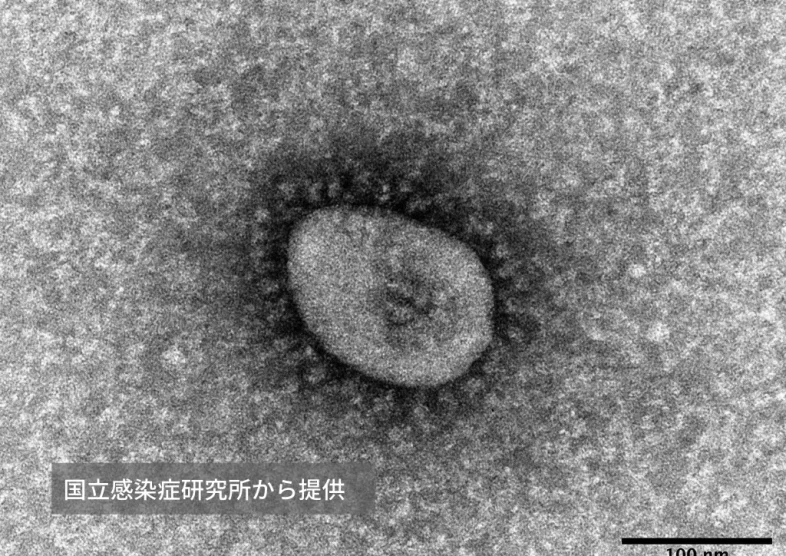
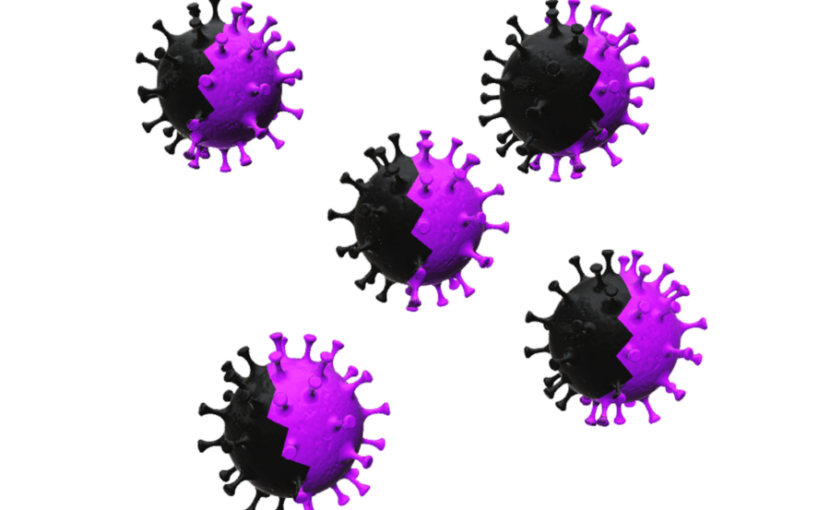
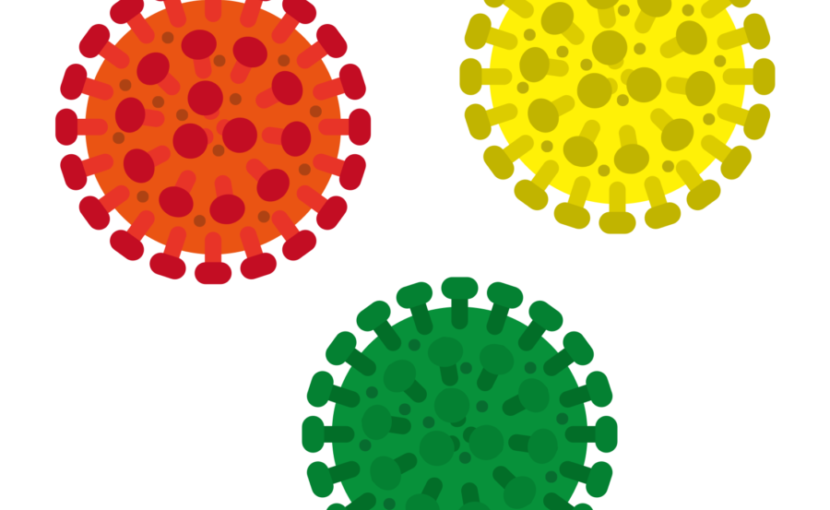




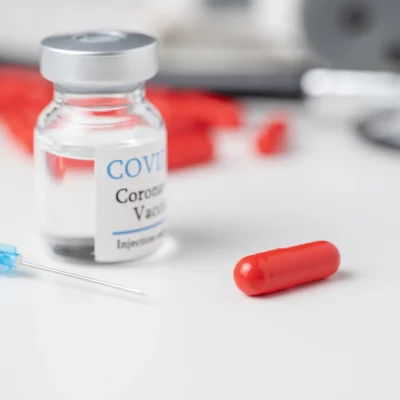
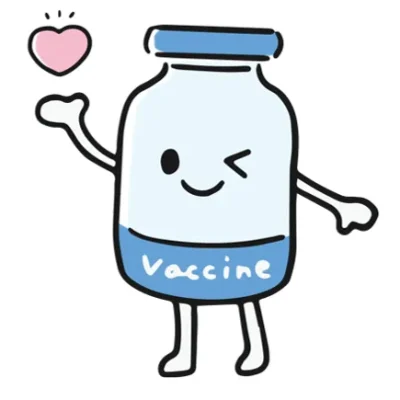








この記事へのコメントはありません。